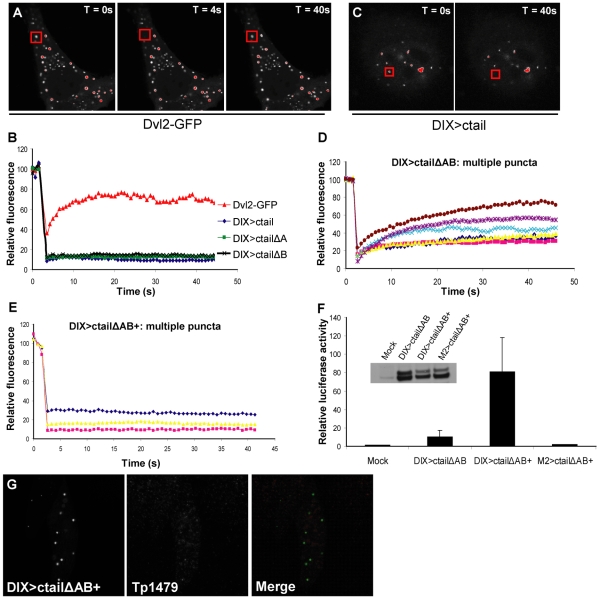Fig. 6.
Stability elements in the LRP6 ctail are essential for its efficient signalling activity. (A-E) Live-cell imaging of HeLa cells expressing (A) Dvl2-GFP or (C) DIX>ctail, subjected to FRAP analysis; relative fluorescence intensities were measured after bleaching of >10 single puncta (boxed in red) by short laser pulses (at T=4 seconds), and plotted against time (B,D,E). Fluorescence recovery is observed for every single Dvl2-GFP punctum (A,B), but not for any of the puncta in wt DIX>ctail or single deletion mutants (B,C). (D,E) FRAP analysis of multiple DIX>ctailΔAB puncta (D), exhibiting variable recovery (see also text), and of DIX>ctailΔABplus puncta (E), exhibiting complete stability, restored by the KGTYFP epitope. (F) TOPFLASH assays in HEK293 cells, revealing restoration of signalling activity of the double-deletion by the KGTYFP epitope (values are directly comparable to those in Fig. 2F and Fig. 4B). Inset: protein expression levels. (G) HeLa cells expressing DIX>ctailΔABplus, immunostained with anti-Tp1479, showing that T1479 within the KGTYFP epitope remains unphosphorylated in the DIX>ctailΔABplus puncta (see also Fig. 5B-E), probably because of the lack of a −3 priming residue.

